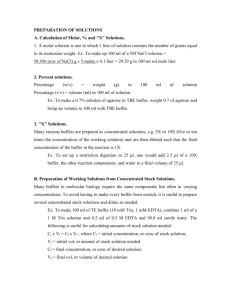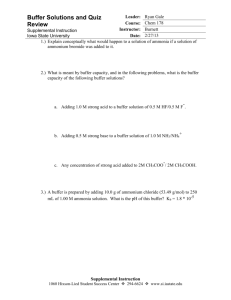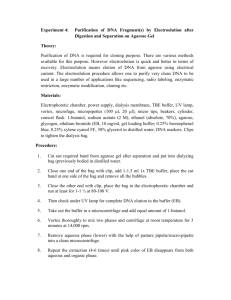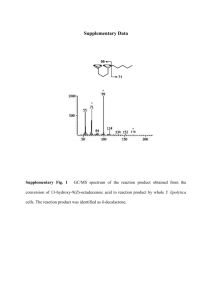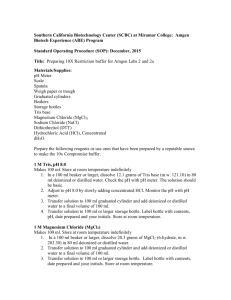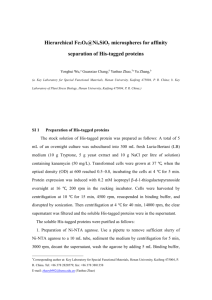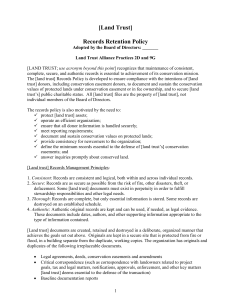Teacher Info Ideally I would like to have the students be able to
advertisement
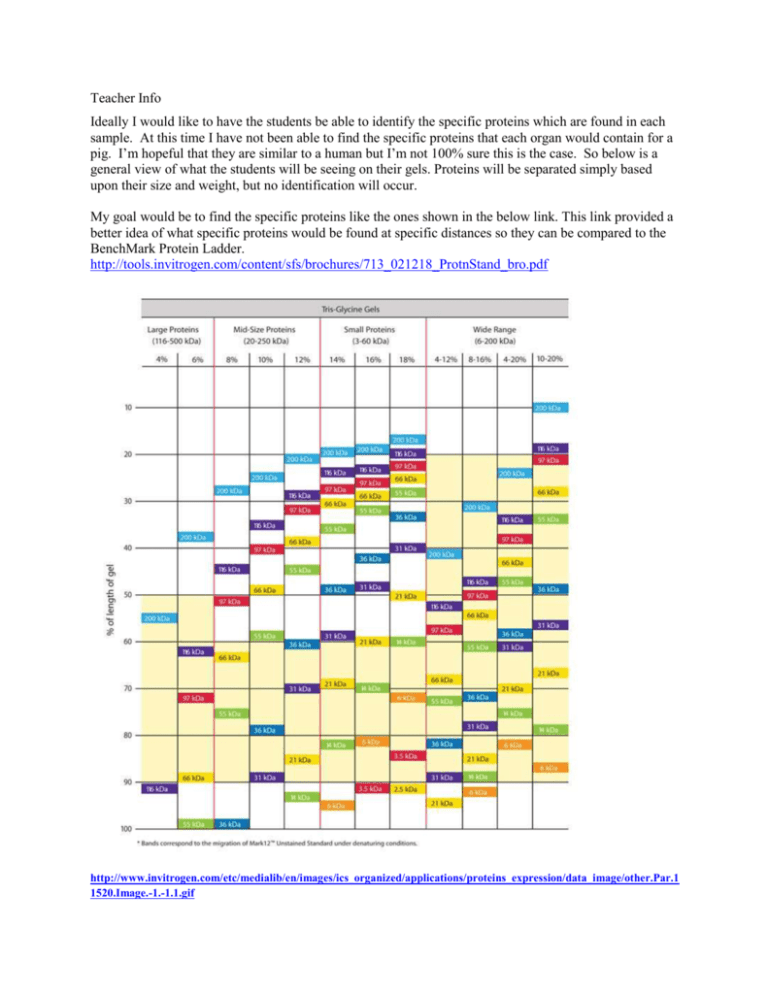
Teacher Info Ideally I would like to have the students be able to identify the specific proteins which are found in each sample. At this time I have not been able to find the specific proteins that each organ would contain for a pig. I’m hopeful that they are similar to a human but I’m not 100% sure this is the case. So below is a general view of what the students will be seeing on their gels. Proteins will be separated simply based upon their size and weight, but no identification will occur. My goal would be to find the specific proteins like the ones shown in the below link. This link provided a better idea of what specific proteins would be found at specific distances so they can be compared to the BenchMark Protein Ladder. http://tools.invitrogen.com/content/sfs/brochures/713_021218_ProtnStand_bro.pdf http://www.invitrogen.com/etc/medialib/en/images/ics_organized/applications/proteins_expression/data_image/other.Par.1 1520.Image.-1.-1.1.gif If you don’t purchase a kit with all the key ingredients you can still complete this lab by making your own solutions. The below information came from the Teacher Guide on Protein Fingerprinting from the website http://biotech.bio5.org/content/activities#MuscleProteinElectrophoresis Recipes and Background Information 5X stock of Tris-Glycine buffer Combine 15.1 g Tris base and 94 g glycine with water to make a total volume of 1 liter. Dilute this 1:4 with water (i.e. 100 ml stock with 400 ml water to make a total 500 ml of 1X Tris-Glycine buffer). Store in a sealed bottle at room temperature indefinitely. 3% agarose in Tris-Glycine buffer In a 250 ml Pyrex bottle, combine 3.75 g agarose with 125 ml Tris-Glycine buffer - DO NOT USE TRISGLYCINE-SDS BUFFER FOR THIS! You'll end up with a giant bubbly mess. Microwave uncovered for 1 minute at a time until agarose is dissolved, being careful not to let the agarose boil over on the microwave or on you! Store loosely covered at room temperature until solidified, and then tightly cover to store indefinitely. Be sure to remove cover before you microwave to dissolve the agarose again. 5X stock of Tris-Glycine-SDS buffer Combine 15.1 g Tris base, 94 g glycine, and 50 ml 10% SDS (5 g SDS with 45 ml water) with water to make a total volume of 1 liter. Dilute this 1:4 with water (i.e. 100 ml stock with 400 ml water to make a total 500 ml of Tris-Glycine-SDS buffer). Store in a sealed bottle at room temperature indefinitely. Coomassie blue stain For each liter of stain, combine 450 ml water, 2.5 g Coomassie blue, 450 ml methanol, and 100 ml glacial acetic. Store in a sealed bottle at room temperature indefinitely. Destain For each liter of destain, combine 600 ml water, 300 ml methanol, and 100 ml glacial acetic acid. Store in a sealed bottle at room temperature indefinitely. 1.0 M Tris-Cl (pH 6.8) Combine 60.5 g Tris base with about 350 ml water. Add enough HCl to give the solution a pH of 6.8. Add enough water to make the total volume of the solution 500 ml (0.5 liter). Store in a sealed bottle at room temperature indefinitely. Sample buffer To make 100 ml sample buffer, combine 10 ml 1.0 M Tris-Cl (pH 6.8), 20 ml 20% SDS, 0.1 g bromophenol blue, 20 ml glycerol, and water to make a total volume of 100 ml. This is actually a 2X recipe, but the sample buffer is used at 2X, not diluted. Dispense in 0.5 ml aliquots for use by the students. Store at room temperature indefinitely.
